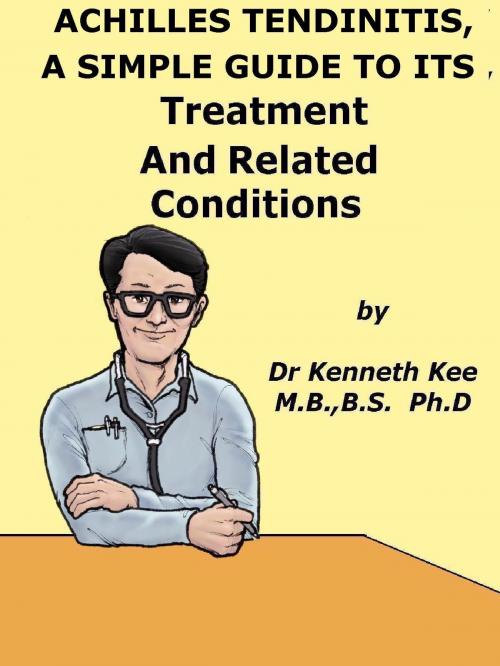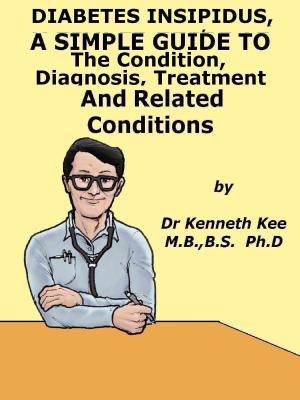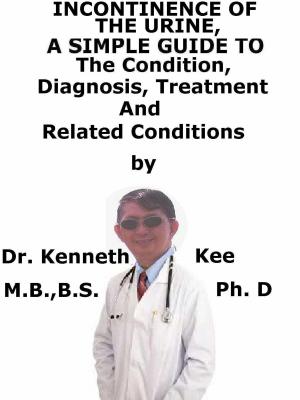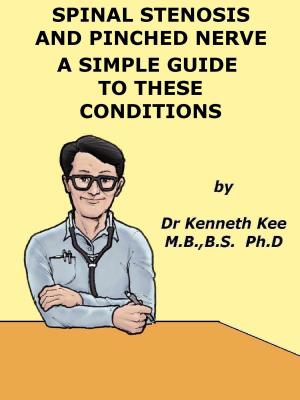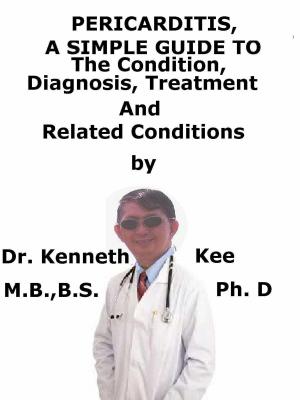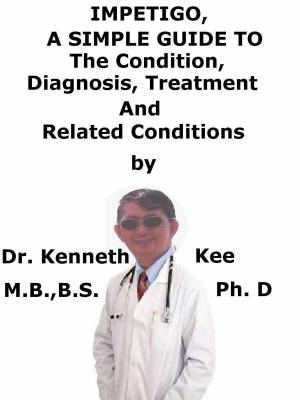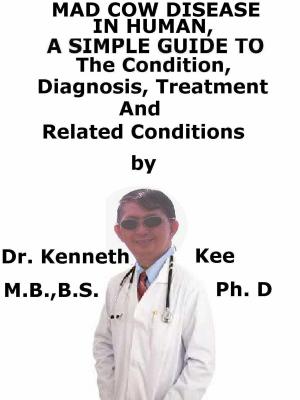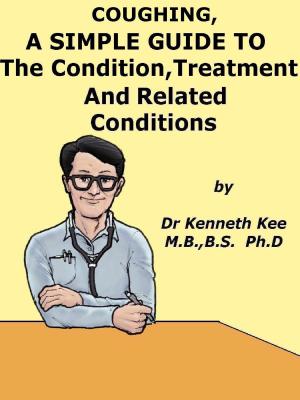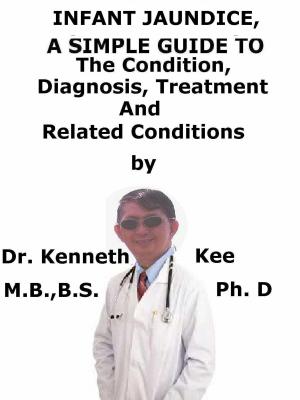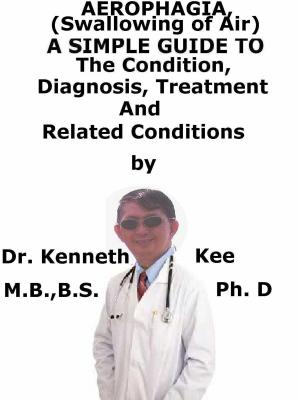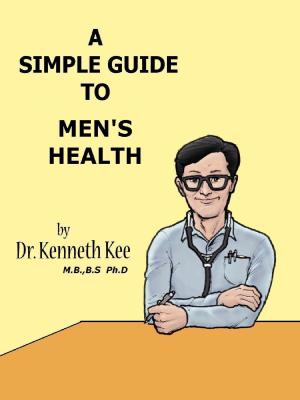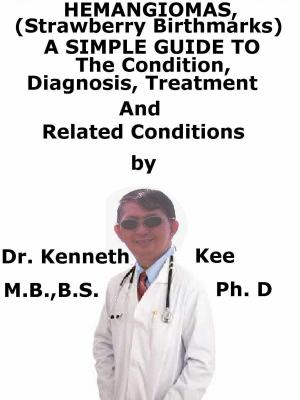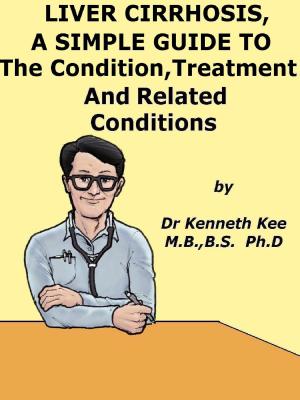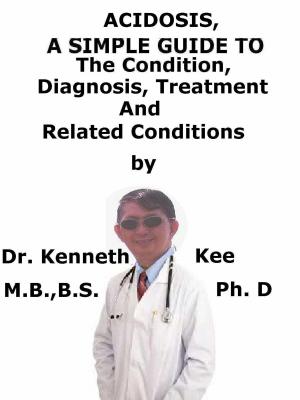Achilles Tendinitis, A Simple Guide to the Condition, Treatment and Related Diseases
Nonfiction, Health & Well Being, Medical, Specialties, Sports Medicine, Health, Ailments & Diseases, Musculoskeletal| Author: | Kenneth Kee | ISBN: | 9781311596338 |
| Publisher: | Kenneth Kee | Publication: | December 5, 2014 |
| Imprint: | Smashwords Edition | Language: | English |
| Author: | Kenneth Kee |
| ISBN: | 9781311596338 |
| Publisher: | Kenneth Kee |
| Publication: | December 5, 2014 |
| Imprint: | Smashwords Edition |
| Language: | English |
The Achilles Tendon is the body’s largest tendon
Achilles tendinitis occurs when the tendon is swollen and tender
Inflammation occurs due to the calf muscles overstretching
Passive stretching is due to frequent walking and jumping
Young male adults are affected more than female
Overexertion leads to many tendinitis in males
There may severe pain and difficulty in running
If untreated the stretched tendon may result in tearing
It is important the tendon is rested and iced
The blood supply to the tendon must not be compromised
X-rays and MRI will the confirm the severity
Severe rupture of the tendon may require surgery
Treatment is by reduction of strenuous activities
Followed by strengthening exercise and physiotherapy
A brace or cast will keep the heel and tendon still
To allow the very important Achilles tendon heal
-An original poem by Kenneth Kee
Interesting Tips about the Achilles Tendinitis
A Healthy Lifestyle
1. Take a well Balanced Diet
2. Rest of the tendon
Hot compress may help reduce inflammation
Splints or bandaging of the tendon and heel area and ankle to rest the tendons
Pain killers such as NSAID (non-steroidal anti-inflammatory drugs) for pain
Muscle relaxant to relax muscles
Local injection of local anesthetic and long acting steroid should be avoided because of danger of rupture of tendon.
Avoid over usage of the Achilles tendon
Strengthen the muscles and tendons with exercises
Surgical reattachment of Achilles tendon may be necessary if torn.
3. Keep bones and body strong
Bone marrow produces our blood
Eat foods rich in calcium like yogurt, cheese, milk, and dark green vegetables.
Eat foods rich in Vitamin D, like eggs, fatty fish, cereal, and fortified milk.
Eat food rich in Vitamins B and C such as green vegetables and fruits
Zinc and other minerals are important to the body
4. Get enough rest and Sleep
Avoid stress and tension
5. Exercise and stay active.
It is best to do weight-bearing exercise such as walking, jogging, stair climbing, dancing, or lifting weights for 2½ hours a week.
One way to do this is to be active 30 minutes a day at least 5 days a week.
Begin slowly especially if a person has not been active.
6. Do not drink more than 2 alcohol drinks a day for a man or 1 alcohol drink a day for a woman.
Alcohol use also increases the chance of falling and breaking a bone.
Alcohol can affect the neurons and brain cells.
7. Stop or do not begin smoking.
It also interferes with blood supply and healing.
Cigarettes contain more than forty types of hazardous and possibly cancer causing chemicals which can harm the smokers and those around them
Chapter 1
Achilles Tendinitis
What is Achilles Tendinitis?
Achilles Tendinitis is the inflammation and swelling of the Achilles tendon.
What are the causes of Achilles Tendinitis?
Causes:
The cause of Achilles Tendinitis is due:
1. Injury or trauma to the Achilles tendon-minor tears in the tendon of these muscles is always present in injury
2. Repetitive over usage of Achilles tendon especially in a runner
What are the symptoms and signs of Achilles Tendinitis?
Onset is usually gradual unless due to injury
Symptoms:
1. Pain on movement of the Achilles tendon
2. Swelling of the Achilles tendon affected at the lower leg and heel
3. Stiffness of the Achilles tendon - inability to stretch
4. Pain often radiates into the foot
Signs:
1. Swelling of the affected Achilles tendon
2. Pain and local tenderness of the affected Achilles tendon
3. Dry crepitus on movement of the Achilles tendon is present
4. X-rays are usually normal although an ultrasound may show minor tears in the tendon.
TABLE OF CONTENT
Introduction
Chapter 1 Achilles Tendinitis
Chapter 2 Interesting Facts of Achilles Tendinitis
Chapter 3 Treatment of Achilles Tendinitis
Chapter 4 Flat Foot
Chapter 5 Plantar Fascilitis
Chapter 6 Ankle Sprain
Chapter 7 Tenosynovitis
Chapter 8 Elbow Dislocation
Chapter 9 Knee Cap Dislocation
The Achilles Tendon is the body’s largest tendon
Achilles tendinitis occurs when the tendon is swollen and tender
Inflammation occurs due to the calf muscles overstretching
Passive stretching is due to frequent walking and jumping
Young male adults are affected more than female
Overexertion leads to many tendinitis in males
There may severe pain and difficulty in running
If untreated the stretched tendon may result in tearing
It is important the tendon is rested and iced
The blood supply to the tendon must not be compromised
X-rays and MRI will the confirm the severity
Severe rupture of the tendon may require surgery
Treatment is by reduction of strenuous activities
Followed by strengthening exercise and physiotherapy
A brace or cast will keep the heel and tendon still
To allow the very important Achilles tendon heal
-An original poem by Kenneth Kee
Interesting Tips about the Achilles Tendinitis
A Healthy Lifestyle
1. Take a well Balanced Diet
2. Rest of the tendon
Hot compress may help reduce inflammation
Splints or bandaging of the tendon and heel area and ankle to rest the tendons
Pain killers such as NSAID (non-steroidal anti-inflammatory drugs) for pain
Muscle relaxant to relax muscles
Local injection of local anesthetic and long acting steroid should be avoided because of danger of rupture of tendon.
Avoid over usage of the Achilles tendon
Strengthen the muscles and tendons with exercises
Surgical reattachment of Achilles tendon may be necessary if torn.
3. Keep bones and body strong
Bone marrow produces our blood
Eat foods rich in calcium like yogurt, cheese, milk, and dark green vegetables.
Eat foods rich in Vitamin D, like eggs, fatty fish, cereal, and fortified milk.
Eat food rich in Vitamins B and C such as green vegetables and fruits
Zinc and other minerals are important to the body
4. Get enough rest and Sleep
Avoid stress and tension
5. Exercise and stay active.
It is best to do weight-bearing exercise such as walking, jogging, stair climbing, dancing, or lifting weights for 2½ hours a week.
One way to do this is to be active 30 minutes a day at least 5 days a week.
Begin slowly especially if a person has not been active.
6. Do not drink more than 2 alcohol drinks a day for a man or 1 alcohol drink a day for a woman.
Alcohol use also increases the chance of falling and breaking a bone.
Alcohol can affect the neurons and brain cells.
7. Stop or do not begin smoking.
It also interferes with blood supply and healing.
Cigarettes contain more than forty types of hazardous and possibly cancer causing chemicals which can harm the smokers and those around them
Chapter 1
Achilles Tendinitis
What is Achilles Tendinitis?
Achilles Tendinitis is the inflammation and swelling of the Achilles tendon.
What are the causes of Achilles Tendinitis?
Causes:
The cause of Achilles Tendinitis is due:
1. Injury or trauma to the Achilles tendon-minor tears in the tendon of these muscles is always present in injury
2. Repetitive over usage of Achilles tendon especially in a runner
What are the symptoms and signs of Achilles Tendinitis?
Onset is usually gradual unless due to injury
Symptoms:
1. Pain on movement of the Achilles tendon
2. Swelling of the Achilles tendon affected at the lower leg and heel
3. Stiffness of the Achilles tendon - inability to stretch
4. Pain often radiates into the foot
Signs:
1. Swelling of the affected Achilles tendon
2. Pain and local tenderness of the affected Achilles tendon
3. Dry crepitus on movement of the Achilles tendon is present
4. X-rays are usually normal although an ultrasound may show minor tears in the tendon.
TABLE OF CONTENT
Introduction
Chapter 1 Achilles Tendinitis
Chapter 2 Interesting Facts of Achilles Tendinitis
Chapter 3 Treatment of Achilles Tendinitis
Chapter 4 Flat Foot
Chapter 5 Plantar Fascilitis
Chapter 6 Ankle Sprain
Chapter 7 Tenosynovitis
Chapter 8 Elbow Dislocation
Chapter 9 Knee Cap Dislocation
